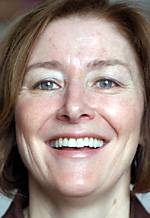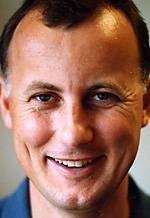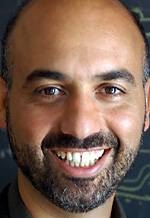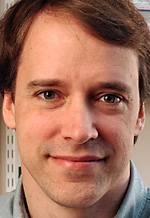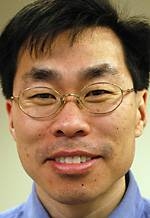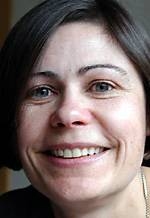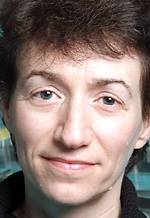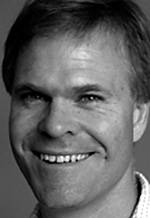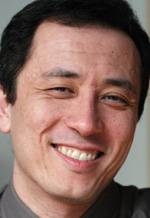The Executive Committee of the MIT Corporation has approved promotion for 21 faculty members to the rank of full professor. In addition, 34 faculty will be promoted to the rank of associate professor without tenure. All appointments will take effect on July 1 unless otherwise noted.
MIT Tech Talk will publish the list in two installments. Below are promoted faculty members from the School of Architecture and Planning, the School of Science and the Sloan School of Management. Promotions in the School of Engineering and the School of Humanities, Arts and Social Sciences will appear in the April 28 issue.
School of Architecture and Planning
Diane E. Davis
Urban studies and planning
Education: B.A. 1986 (Northwestern), M.A. 1978 and Ph.D. 1986 (both from the University of California at Los Angeles)
Joined MIT faculty: 2001 (as tenured associate professor)
Davis is a political sociologist whose research interests include the politics of urban policy, cities in comparative and historical perspective, and the relationship between cities and national development. Current research examines the relationship between police impunity, deteriorating rule of law, and changing patterns and priorities of urban governance in countries undergoing transition.
Sloan School of Management
Simon Johnson
Education: B.A. 1984 (Oxford University), M.A. 1986 (University of Manchester), Ph.D. 1989 (MIT)
Joined MIT faculty: 1997
Tenured: 2002
Johnson's research focuses on how institutions affect economic development and, in particular, entrepreneurship. His work has had a broad impact on the academic community in multiple disciplines, including corporate finance, development economics, political science and economic history. He has designed several new courses on global entrepreneurship and venture capital.
Duncan Simester
Education: B.Com., M.Com., L.L.B. 1985-90 (University of Auckland), Ph.D. 1993 (MIT)
Joined MIT faculty: 1997
Tenured: 2001
Simester's research has addressed three areas within marketing: communicating and inferring price information through price cues, improving quality through incentives, and using optimization in marketing. He has been runner-up three times for the John D.C. Little Award, the most prestigious in quantitative marketing.
School of Science
Raymond Ashoori
Physics
Education: B.A. 1984 (University of California at San Diego), Ph.D. 1991 (Cornell)
Joined MIT faculty: 1993
Tenured: 1999
Ashoori's research contributions include the first direct imaging of single electron motion inside a semiconductor; discovery of the magnetic-field-induced energy gap in the tunneling spectrum of the two-dimensional electron gas; invention of single-electron capacitance spectroscopy and its use in studying localized electronic levels; and creation of an artificial atom that contains from 0-50 electrons.
David P. Bartel
Biology
Education: B.A. 1982 (Goshen College), Ph.D. 1993 (Harvard)
Joined MIT faculty: 1996
Tenured: 2002
Bartel is a world leader in the field of RNA function and evolution. He has generated RNA molecules that can catalyze the type of enzymatic reaction needed for RNA self-replication, and has discovered numerous small RNAs that have important regulatory roles in animals and plants. He has been associated with the Whitehead Institute since 1994.
Jianzhu Chen
Biology
Education: B.S. 1982 (Wuhan University), Ph.D. 1990 (Stanford)
Joined MIT faculty: 1994
Tenured: 2001
Chen has identified DNA sequences that are critical for the assembly of immune receptor genes. He and his group have also identified and characterized memory immune cells and defined a novel pathway of memory immune cell differentiation. Their findings may aid development of vaccines for diseases including AIDS and SARS.
Jacqueline Lees
Biology
Education: B.S. 1986 (University of York), Ph.D. 1990 (University of London)
Joined MIT faculty: 1994
Tenured: 2001
Lees' research focuses on identifying proteins and pathways that are affected by oncogene and tumor suppressor mutations and understanding how these changes contribute to tumor development. She is a world leader in establishing the roles of the E2F family of transcription factors in regulating biological processes that affect cell proliferation, cell death, development and cancer.
Hazel L. Sive
Biology
Education: B.Sc. 1976 and B.Sc. Hons 1979 (both from the University of Witwatersrand), Ph.D. 1986 (Rockefeller University)
Joined MIT faculty: 1991
Tenured: 1999
Sive is known for her work on formation of the nervous system in vertebrate embryos, using the frog and zebrafish as models. She pioneered analysis of the extreme anterior of the embryo, an unusual region that forms the primary mouth and, in frogs, a mucus-secreting organ called the cement gland.
Kelin X. Whipple
Earth, atmospheric and planetary sciences
Education: B.A. 1985 (University of California at Berkeley), M.S. 1989, Ph.D. 1994 (both from the University of Washington)
Joined MIT faculty: 1995
Tenured: 2002
Whipple is a world leader in tectonic geomorphology, which involves quantitative analyses of both small-scale erosion processes and large-scale landscape evolution in tectonically active mountain ranges. At MIT, he has made breakthrough studies of bedrock erosion dynamics that elucidated the strengths and limitations of current erosion laws.
Matthew Wilson
Brain and cognitive sciences
Education: B.A. 1983 (Rensselaer Polytechnic Institute), M.S. 1986 (University of Wisconsin), Ph.D. 1990 (Caltech)
Joined MIT faculty: 1994
Tenured: 2001
Wilson, who studies learning and memory, has made major contributions in characterizing neuronal activity in the hippocampus. He built on his "tetrode" technology (for recording simultaneously from large numbers of neurons in freely moving animals) to make important discoveries about mammalian memory consolidation and the role of sleep.
A version of this article appeared in MIT Tech Talk on April 14, 2004.
